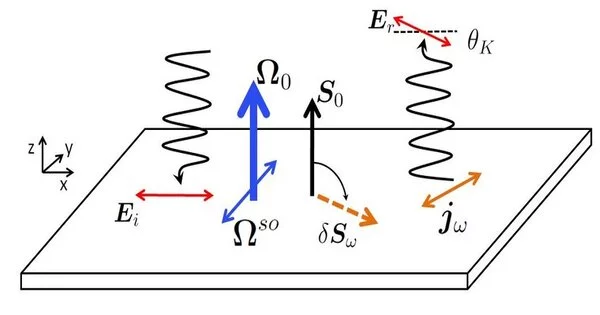The electric dipole spin resonance (EDSR) method uses quantum mechanical effects such as the spin-orbit interaction to control the magnetic moments inside a material. Essentially, EDSR allows you to flip the orientation of magnetic moments by using electromagnetic radiation at resonant frequencies. Emmanuel Rashba was the first to propose the EDSR.
EDSR is a quantum phenomenon that occurs when an electron’s spin is coupled to a gradient in an electric field. A magnetic field is applied to a sample containing electrons with a specific spin orientation in this phenomenon, and an oscillating electric field is then applied perpendicular to the magnetic field. The oscillating electric field interacts with the electric dipole moment of the electron, causing the spin to flip, which can be detected by measuring the change in the magnetic moment of the sample.
ESR is a spectroscopic technique used to study the magnetic properties of materials. It is also known as electron paramagnetic resonance (EPR). A magnetic field is applied to a sample containing unpaired electrons, causing the electron spins to align with the field. Information about the spins and local environment of unpaired electrons can be obtained by measuring the absorption of electromagnetic radiation at a specific frequency.
To process information, computer hardware uses the electron charge in transistors and the electron magnetic moment or spin in magnetic storage devices. Spintronics, a new field, aims to unify the operations of these subsystems. Electric fields should be used to control the electron spin in order to achieve this goal. The electric component of AC fields can be used to manipulate both charge and spin in EDSR.
NMR, on the other hand, is a technique that makes use of atomic nuclei’s magnetic properties. It is widely used to study the structure and properties of molecules in chemistry, biochemistry, and medical imaging. A strong magnetic field is applied to a sample containing nuclei with spin, such as hydrogen nuclei (protons) or carbon-13 nuclei. Information about the molecular structure, chemical environment, and dynamics can be obtained by applying radiofrequency pulses and measuring the resulting signals.
Application
EDSR has been used in a variety of applications, including quantum computing, spintronics, and quantum information processing. In particular, EDSR is being explored as a way to manipulate the spin of electrons in semiconductors, which could lead to the development of more efficient and powerful electronic devices.
Overall, EDSR is a promising area of research that has the potential to revolutionize the field of electronics and information technology.
















